Today, every self-respecting parent considers it necessary to send their child to all sorts of clubs like “Little Erudite”, “Smart Guys”, “Geeks” as early as possible. At the age of three, modern mothers and fathers require their children to know English, be able to count to 100, and draw in the style of Van Gogh.
But almost none of the modern parents pay attention to the development of the child’s emotional world, his feelings, emotions, communication abilities - what is included in the concept of “emotional intelligence”. Adults believe that these processes in a child should develop on their own, without outside help. And this is a big misconception.
An impoverished emotional sphere begins to “slow down” the development of intellectual processes. In addition, the increased technologization of life, the constant use of gadgets by adults and children lead to the emergence of the “dry heart” phenomenon: children become unemotional, less responsive to the feelings of other people and understanding their own emotions, their emotional intelligence does not develop.
So what to do? The answer is simple - to develop the child’s emotional intelligence, to teach him to understand himself and others.
In this article, you will become familiar with the concept of emotional intelligence, find out whether its development affects success in school, and also get an idea of the methods and means of developing the sphere of emotions and feelings of your child.
Content:
- Emotional intelligence: concept and components How does emotional intelligence help a child in school learning?
- Is it necessary to develop EI?
- Early age (from birth to 3 years)
The emotional sphere of a preschool child
At each age stage, emotional experience accumulates. In the preschool period, there is a significant expansion of the circle of people with whom the child comes into contact. A variety of contacts enriches the emotional sphere.
Imagination also develops rapidly. And this process is the most emotionally intense compared to other cognitive processes.
From 2 to 4 years old, an emotional and practical form of communication is built between children. Often the communication of such kids consists of the opportunity to run or jump together. This makes them feel joy, interest, and admiration.
The emotional development of a child is a complex gradual enrichment of his emotional sphere, occurring in the context of general socialization.
Children's emotions are unstable. Their mood changes quickly. Younger preschoolers understand such simple emotional states as fear, anger, resentment, joy and grief. Every year, familiarity with human experiences expands.
It is still difficult for preschoolers to understand what feeling they are experiencing at a certain moment. However, some emotions are already identified by them, and quite early on you can hear from the baby: “I’m angry” or “I’m offended.”
If things work out, the preschooler experiences bright positive emotions. If it doesn’t work out, there will be strong negative experiences. There are more negative emotions. And they are not desired as much as positive ones. Teaching a child to recognize them and comprehend them is the main task of developing the emotional sphere in preschool age.
Then it will be time to learn to control the forms of manifestation of feelings. These are critical steps in developing emotional and social intelligence.
Emotional intelligence: concept and components
Emotional intelligence is a type of intelligence responsible for a person’s recognition of his own emotions and the emotions of those around him, as well as for managing them. Scientists became interested in it relatively recently. The first work devoted to its study appeared in 1990. Its authors, Peter Salovey and John Mayer, identify four components of emotional intelligence:
- Perception of emotions is a person’s ability to recognize his own emotions and the emotions of another person (by facial expressions, gestures, posture, behavior, voice).
- Understanding emotions is the ability to determine the reasons for the appearance of a particular emotion in oneself and others, to establish a connection between emotions and thoughts.
- Managing emotions is the ability to suppress emotions, awaken and direct your own and others’ feelings to achieve goals.
- Using emotions to stimulate thinking - awakening creativity in yourself, activating the brain with the help of your own emotions.
In other words, the theory of the development of emotional intelligence consists of a child’s journey from understanding emotions to managing them.
How does emotional intelligence help a child in school learning?

The specifics of the modern educational process require from today's schoolchild increased attentiveness, rapid response to changing conditions, developed communication skills, suppression of momentary desires in order to achieve assigned tasks.
The results of a recent study of the level of emotional intelligence of high school students, conducted in a secondary school in the Orenburg region in 2022, are interesting:
Schoolchildren with a high and average level of development of the sensory sphere are adapted to the conditions of school life, more easily establish and maintain contacts with teachers and classmates, and are successful in the learning process.
Children with low and very low levels of development of emotional intelligence experience difficulties in communicating with peers and teachers, often conflict with them or find themselves isolated from the team. They often cannot cope with emotional states in stressful and critical situations. The performance of these children is satisfactory.
Are you worried that your child has problems communicating with peers at school, kindergarten, or that he does not have good relationships with teachers? Find out how things really are so you can help your child. Listen to the sound around you and determine your child’s location in real time using the application for caring parents “Where are My Children” from the AppStore and GooglePlay.
Do you need to develop emotional intelligence?
Definitely necessary. To determine at what level of development your child’s sphere of emotions and feelings is, you need to know the signs and criteria of low emotional intelligence, as well as methods for diagnosing it.
Briefly about the main thing
- Emotional intelligence is the ability to understand yourself well and manage your emotions, empathy, the ability not to violate the personal boundaries of other people and to defend your own.
- A child needs to develop emotional intelligence so that he can understand himself and others, separate his emotions from others and not become infected by them. Make decisions based on your own conclusions and principles, and not on the opinion of the majority.
- To promote the development of EI in a baby, you need to gradually introduce him to emotions. Name his emotions, yours, the emotions of other people and their reasons.
- It is important for a parent to develop their own EI; this will help them become the best mentor for their child. You can work on developing EI throughout your life.
- EI is a tool that can help a person become more successful, adapt more easily to a constantly changing environment and circumstances, and emerge victorious from difficult situations. To be able not to be led by your temporary impulses, but to manage yourself and your life; take responsibility for it.
Author: Elena Snarskaya, psychologist of the Scientific and Practical Center for Mental Health of Children and Adolescents named after. G. E. Sukhareva, family psychologist, expert of our courses for parents
Photo by Irina Antonova, Yulia Vorobyova and Ekaterina Shvidchenko
Editor: Camila Klenowitz
Signs of Low Emotional Intelligence

The level of emotional intelligence is called “emotional intelligence quotient” or EQ.
A person with low EQ:
- incapable of sympathy or empathy for another person. Neither other people's sadness nor other people's joy touches him. Such a person also cannot accept other people’s help and support; he does not understand people’s motives;
- close relationships like love and friendship are not available to such a person, since friendship requires mutual concessions, exchange of emotions, compassion and emotional support. Even if such a person creates a family, there will not be a warm atmosphere of love and attention;
- does not know how to control his emotions. Often such a person demonstrates either unbridled joy, uncontrollable rage, or lingering sadness. He does not always understand what is happening to him and how to help himself in such situations. In emotionally stressful situations, such people also get lost.
- does not understand that his own uncontrolled emotions can lead to disastrous consequences; in any unpleasant situation he blames other people, but not himself.
- does not know how to talk about feelings, cannot answer the question “What are you feeling now?”, does not listen to his own feelings.
How developed emotional intelligence will help a child in the future
Many of us are worried about the future of our children: the world is changing rapidly, no one knows what it will be like when our children grow up. Anxiety pushes us to develop our children in different directions, trying to “stuff” into them as much knowledge, skills, and abilities as possible. But, just as generals usually prepare for the past war, so we, parents, can offer our children success strategies from the times of our successes.
We cannot know in advance what professions will be in demand in 20 years and what to prepare a child for so as not to make a mistake. But we can develop his adaptability, instill socialization skills - and it will be easier for him to live in different circumstances, to find his place in life and like-minded people.
We can already see that there is a growing trend towards the service sector. This is a huge area where a person directly communicates with another person: from the familiar profession of a waiter to the equally familiar profession of a teacher or psychologist.
...And how many unknown professions will appear! And this means that developed emotional intelligence will become a strong support for the child, no matter how life turns out and no matter where they end up.
Our personality becomes an instrument. By developing a child’s personality, we give him something that will make it easier for him to become a successful adult.
EQ diagnostics

Currently, there are 3 groups of methods for measuring EQ levels in adolescents and adults:
- techniques that study individual abilities that make up emotional intelligence;
- techniques where a person evaluates himself;
- methods where self-assessment and assessment of the level of emotional intelligence are carried out by members of the subject’s family, his colleagues, and friends.
To diagnose the level of emotional intelligence of preschoolers and schoolchildren, projective drawing tests of the type “Completing drawing: the world of things - the world of people - the world of emotions” are used, as well as questionnaires of various levels of complexity.
If you find it difficult to diagnose your child’s emotional intelligence yourself, contact a kindergarten or school psychologist.
What is meant by social intelligence?
Not everyone distinguishes between the concepts of intelligence as such and social intelligence, believing that this is one and the same characteristic. Before considering their development in preschool age, it is necessary to understand the difference between these structures.
Let us recall that general intelligence is represented by the ability to think and a wide range of knowledge. It is impossible to remove these characteristics from social intelligence, only the field of application here is different - relationships in society.
It cannot be said that social is part of general intelligence. This is confirmed by examples of social relations. It often happens that an erudite and knowledgeable person behaves among people like a bull in a china shop. Whether out of ignorance or whim, he does not show the desire to understand others or the desire to be understood by others.
A person with developed social intelligence may not know much from publicly available scientific and practical fields, but at the same time it is surprisingly easy to find a common language with people who are different in character, status, and age.
This type of intelligence combines four abilities that make up its structure:
- anticipating the consequences of behavior
- ability to read information from facial expressions, postures and gestures
- the ability to listen and recognize different shades of speech, so-called verbal expression
- the ability to analyze situations of interaction between people.
The listed abilities are noticeable during direct observation. But special methods have also been created to diagnose their level of development. The most famous of them is the standardized test by J. Guilford.
The technique is convenient to use starting from adolescence. It is impossible to measure the social intelligence of young children with its help. Yes, this is not necessary. Social intelligence in preschool children needs to be developed, not measured.
Development of the sphere of emotions and feelings in children

At what age should you develop emotional intelligence? From birth. From the very first day of a child's life. Let us tell you in more detail how the child’s emotions and feelings develop at each stage of growing up.
Early age (from birth to three years)
As soon as a child is born, the development of his emotional intelligence begins. He sees the smiles of his family and friends, feels their touches, learns to accept and recognize the emotions of happiness, love, and care.
In the third week of life, the baby develops a revival complex - a special emotional-motor reaction directed towards an adult, which is expressed first in visual concentration on the face of mom and dad, then a smile, motor revival and humming appear.
A child’s acquaintance with the emotions of fear, sadness, and pain occurs when colic begins, teeth are cut, or the mother does not come to him for a long time.
Preschool age (4-7 years)
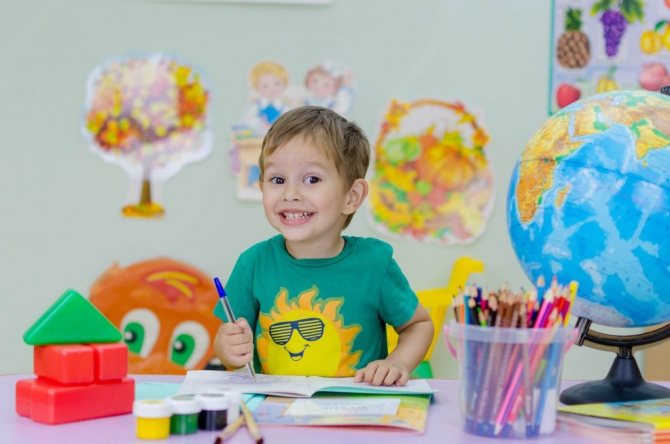
In preschool age, the development of emotional intelligence continues. The child gets acquainted with the names of emotions, learns to identify them in himself and other people, and learns ways to overcome anger and aggression.
The main thing at this age for a child is to fully experience the entire spectrum of feelings. But their parents do not always support them in this. Remember how often you heard from your moms and dads, and maybe you yourself often told your child: “Don’t cry!”, “Upset because of nonsense,” “I’m being a ninny,” “Don’t fight, you’re a girl.” . This is nothing more than the suppression of a child’s emotions, their devaluation, which not only does not contribute to the development of emotional intelligence, but also makes the child ashamed of himself and his own feelings.
Psychologists warn that holding back strong emotions in preschool age can lead to neuroses and psychological problems in adulthood.
Upon entering kindergarten, a child acquires the first skills of social interaction, learns to make friends, communicate with peers and adults.
School age (7-10 years)

At school age, the most intensive development of a child’s emotional intelligence occurs. He acquires the ability to recognize and accept his own feelings and emotions, and learns to control them. The child begins to understand the feelings of other people, find a common language with them, imagine himself in the place of another person, and empathize with him.
The main sources of knowledge of the world of feelings and emotions for a child are family and school. At school, the child takes part in the life of the class, interacts with classmates and teachers.
The child may face situations of bullying, rejection by classmates, and prejudiced attitudes from teachers. Difficult situations play a special role in a child’s life, giving him the opportunity to test his abilities, which in some cases will bring joy and pride in his own achievements, and in others will cause anger and disappointment. Here, emotional intelligence becomes a kind of regulator of life, consolidates the necessary emotional information and weeds out the unnecessary.
Adolescence (10-18 years)

This age is characterized by a “storm” of emotions and feelings that a teenager cannot always cope with. A young man or girl begins to realize his own exclusivity and uniqueness, at the same time opposing himself to others, which often leads to conflicts both with peers and with adults.
It is difficult for a teenager to process his emotions; he often does not understand what is happening to him. Emotional manifestations in adolescence are unstable: from wild joy to uncontrollable outbursts of aggression.
Therefore, it is important for parents, during this difficult period for everyone when a child is growing up, to become for him not a strict dictator, demanding unquestioning obedience and compliance with all norms and rules, but an understanding and empathetic friend. Moms and dads should not reject or devalue the complex and sometimes contradictory emotions, thoughts and actions of their child.
Rules for raising emotionally intelligent children
There are various methods for developing the emotional intelligence of middle-aged children, preschoolers, and toddlers. Children generally seek activity and enjoy repetition, so they are able to learn quickly while enjoying exercise. The following 5 rules are taken from the dissertation of D. Goleman, a journalist and psychologist from the USA, whose works include more than 10 books on psychology.
Ability to relax
Parents often forget to teach their children to calm down and relax. They have a lot of energy, they are constantly on the move, there is simply no time for rest. However, it is important to develop the ability to relax in babies from birth. A physically calm child can better understand what others are saying to him. Therefore, it is important that parents know how to calm him down. The easiest way to convey information to him is in the form of a game. As he gets older, encourage him to relax on his own. For example, a crib helps a child younger than 1-2 years old to calm down. Mom can find a permanent place in the house where she can always spend quiet time with her child during the day. Eventually it will become a ritual. For children over 1-2 years old, you can use your finger on their back to draw shapes, letters, animals (depending on age, ability level), and let them guess what you are drawing.
Children at this age enjoy play. A good way to calm yourself is through breathing games. First, the child takes a full breath, then holds his breath for a few seconds, after which he exhales. It is best to do exercises in the evening; Gradually teach your child to do activities independently throughout the day.
In children aged 2-3 years, you can use the imitation technique, i.e. You do the activities, and the baby repeats after you. In the case of breathing exercises, show him how to breathe - he will begin to imitate you. By following you, he will feel safe and will be able to enjoy relaxation exercises.
The ability to notice
Methods for developing emotional intelligence in preschoolers include teaching them to notice positive things that will help them improve their mood during difficult times. This will help you better manage negative thoughts. The ability to recall positive experiences helps to cope with painful moments in emotional memory.

Again, you can rely on the “evening ritual”, gradually leading the child to perform the exercises independently throughout the day (it all depends on age, abilities, skills). Talk to him about what good happened during the day. It is important that he enjoys the sensations of remembering pleasant experiences. Therefore, include questions about feelings in your conversation plan.
When communicating with young children, use sign language and imitation. Sit down together, tell them what a good day you had. The younger the child, the more you exaggerate your facial expressions and overact. An excellent assistant is the use of signs and symbols - children learn them before words. Accompany each sign with words.
Strengthening mental resilience through visualization
Help your child imagine an unpleasant situation and completely overcome it through positive emotions. Accompany everything with words, use graphics. Choose the form of communication in accordance with the age of the baby. The older he is, the more independence he will show during exercise.
Use imagination about desired results
An exercise using imagination that develops the emotional intelligence of preschoolers consists of 3 stages.
- Ask your child to do something good and pleasant. When training young children, describe how the action makes you feel. The older the age, the more independent description of feelings.
- Then, together, act out the same situation with the difference that the child will behave more selfishly. Again, describe the feelings that drive the actions.
- Together, evaluate both behavior options and point to the “correct” form.
In this exercise with young children, use imitation initially. Parents play, talking about their feelings (words, signs). With age, the child can train independently.
Awareness of your thoughts, feelings, working with them
Awareness of the cause of emotions is an important aspect of the development of emotional intelligence in preschool children. When your child is angry, ask him how angry he is. Ask what caused the anger. Teach your child to understand the relationship between what he thinks and how he feels. Then come up with reasons to make it feel safe (in case of fear) or encourage it (“your role in the fairy tale is small but important”).
For children, both preschool and school age, the opinion and behavior of their parents is very important. If you trust your child and give him a good example, he will believe you and imitate your actions. Children need independence, so don't be afraid to let them take responsibility for their actions. At the same time, constantly show your love. Even if children realize that their parents do not approve of their behavior, they should be confident in their love.

Practical advice for parents

It is important for parents to understand that there are no good or bad emotions. Every emotion experienced by a child is important and necessary for his full and harmonious interaction with the world around him. Through understanding and “living” his own and others’ emotional states, the child must come to control, create and change the world around him for the better. This is what will be the key to his happy future.
The development of emotional intelligence involves the child’s gradual mastery of each stage:
Understanding your own feelings
At this stage, the child gets acquainted with all the diversity of the emotional world, learns the name of each emotion, how it is expressed, listens to himself, learns to distinguish one emotion from another, and understand the reason for its appearance.
At this stage, parents are advised to:
- tell the child about feelings and emotions through visual material: pictures, manuals, children's literature with illustrations;
- read fairy tales and watch cartoons with rich emotional content together;
- voice your feelings and the feelings of your child in various situations: “I’m very angry now because you broke the cup”, “I see that you are upset because your favorite car is broken”, “Grandma is glad that you gave her this wonderful drawing";
- Ask your child every day: “What’s your mood today?”, “How did you feel today?”
Understanding another person's feelings
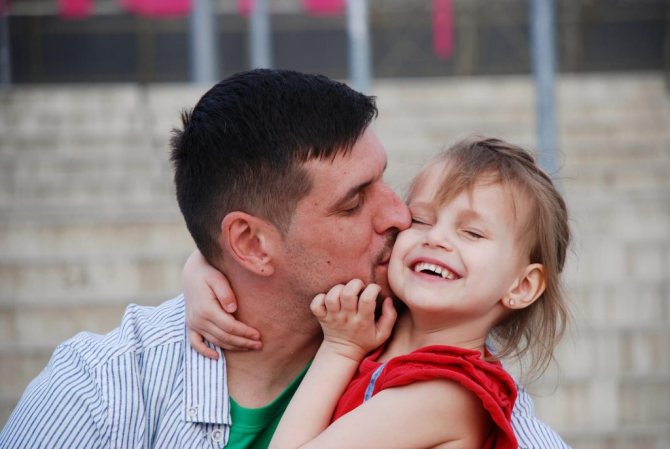
The child learns that not only he, but also other people have emotions and feelings, learns to determine what another person is experiencing by his facial expressions, posture, behavior, learns to support and empathize.
Parents will find it useful:
- don’t “sculpt” yourself into being ideal, happy and satisfied with life 24 hours a day. The child should see you for real: sometimes upset, sometimes tired, and sometimes angry. Only then will he learn to understand the feelings of other people and change his behavior in accordance with them: “Dad is upset today, he has troubles at work, let’s not play noisy games today, but watch a cartoon in your room”;
- discuss the behavior of fairy tale and cartoon characters: “What do you think Vasilisa the Wise felt when Ivan Tsarevich burned the frog’s skin without asking?”, “What do you think Kolobok’s mood was when he rolled away from his grandparents?”;
- develop a child’s sense of empathy and compassion. Don't forget that mom and dad are role models for their children. If your family does not have trusting relationships, an atmosphere of love, acceptance and support, all these feelings will remain inaccessible to the child.
Managing your own behavior
Once a child learns to understand and analyze what he feels, he will be able to control and manage his emotional state.
Parents need:
- teach your child acceptable ways to get rid of anger and anger: beat a pillow, tear paper, stomp your feet;
- teach to listen to bodily sensations;
- Together with your child, choose ways to raise your mood: go for a walk in the fresh air, watch a cartoon, listen to fun music.
Social interaction and the use of emotional resources in achieving goals
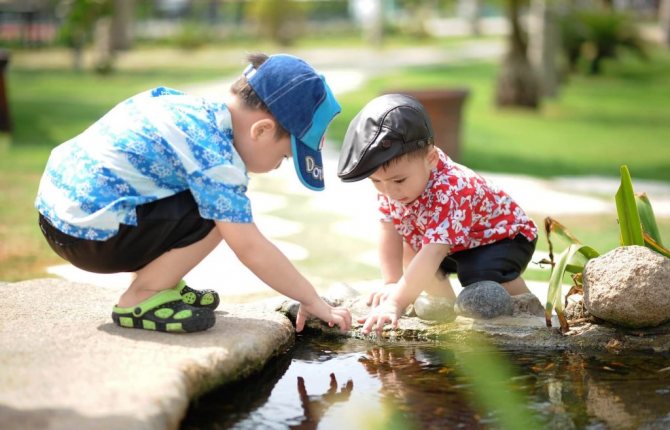
To become a happy and successful person in the future, a child needs to learn to interact with the people around him: establish and maintain interpersonal relationships, provide timely help and support, resolve conflicts, and be able to work in a team. This can be achieved only by being well aware of your own feelings and the feelings of other people. And - like the top of the pyramid - use your emotional resource to achieve your goals, personal growth and self-realization.
It is important for parents:
- develop the child’s communication skills through joint games with adults and peers, watching cartoons and films, reading literature on the topic of friendship and friends;
- develop adequate self-esteem, independence, and self-confidence. The child must be aware of responsibility for every action he makes and be prepared for the consequences.
Recommendations for parents
Developing emotional intelligence in children is not so difficult, but you should not expect quick results. Only parents can help their child by promptly introducing certain rules into life. Every effort should be made to ensure that the child has precisely those skills that are part of EI.
It is best to start classes to improve emotional intelligence in preschool age. If this period has already passed, then do not despair, because... It will still be possible to achieve the goal. When developing EI in older children, you just need to select methods more carefully, and also make every effort to convince the child of the importance of these activities.
The most important thing in the development of emotional intelligence is the attitude of parents. Without proper interaction with the baby, it will not be possible to achieve results. Adults must show the child that they are interested in more than just his educational success. To do this, you need to show special love, affection and care towards him, while you must take into account his opinion and perceive him as a full member of the family. The atmosphere created by these parental actions will make it easy for the child to begin improving EI.
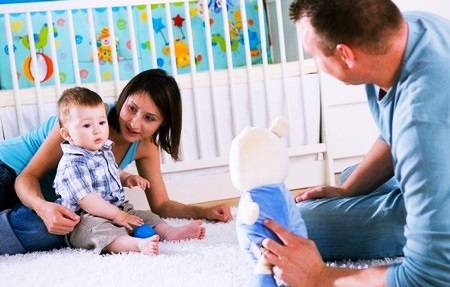
For parents who want to develop EI in their child, there is a small list of recommendations that will help achieve the desired effect
It is very important to follow at least most of them, because... they are aimed at increasing the effectiveness of classes, as well as creating a favorable environment at home
Basic recommendations:
Accept the child exactly as he is. You need to have a positive attitude towards all the characteristics of your baby and in no case be negative towards any of them. Show all your feelings, don’t hide your emotions. The child must understand exactly what his parents feel. This will help not only create a good atmosphere within the family, but also develop EI. Discuss all controversial situations. We should discuss the problems that have arisen together and try to find a solution to them. If possible, the search for a compromise should be entrusted to the child. Teach your child to describe the feelings he is experiencing. Parents should regularly ask their child to talk about exactly how they feel. Associations can be a good help. Talk about your shortcomings
It is important to convey to the child that there are no ideal people in the world. But one cannot mention its shortcomings, because
it may have the opposite effect. Show optimism towards the world around you. The task of parents is for the child to learn to independently find the bright side even in the worst events. It is important to show him this by example. Demonstrate determination. Just as in the previous case, adults should show everything to the child using themselves as an example. Determination of purpose is best instilled shortly before the first visit to school. Be honest. You should always tell your child everything exactly as it is. Frankness is very important for relationships and will help your child begin to perceive the world a little differently. You shouldn't hide even bad information. Control your time. Parents should ensure that the child does not devote too much time to useless entertainment, from which he could develop anger, and also sleeps enough hours every day. Stimulate social interaction. It is necessary to encourage the child’s desire to communicate with peers, provide him with such an opportunity, and also regularly arrange family vacations that involve communication.
The development of emotional intelligence in the smallest children should begin with the implementation of such simple rules, and only then move on to targeted training. These recommendations can be considered basic for achieving results.
Games and exercises to develop a child’s emotional intelligence
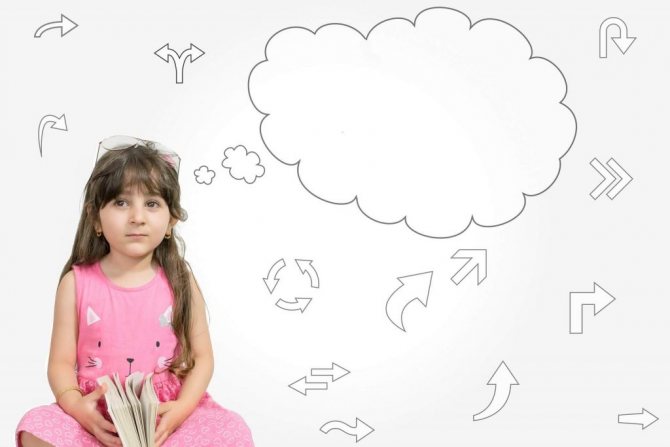
Psychologists recommend using games and exercises to enrich the sensory sphere and develop the emotional intelligence of children of different ages. All of them can be used by parents to help their child understand themselves and other people.
Games with emotional pictograms
Make pictures with faces with emotions of joy, sadness, anger, fear, surprise, calm, etc. You can use them separately or make a so-called “Mood Cube”. The child is asked the question “What is your mood today?”, and he selects the corresponding picture. Subsequently, you can complicate the game by describing certain situations, for example: “Katya had a fight with her best friend Masha. How do you think she felt? What is her mood now?
Exercise “Show the emotion”
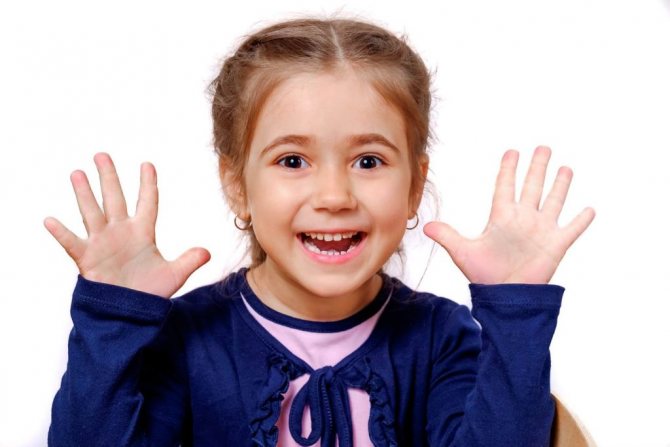
The child conveys this or that emotion with the help of facial expressions, gestures and posture - mom and dad guess and vice versa. You can have a competition for the best depiction of an emotion.
Watching cartoons, films, reading literature, followed by discussion of the characters’ feelings.
Game “I am happy when...”
The child, together with mom and dad, take turns telling in what situations they are happy, afraid, upset, surprised, etc.
Emotional intelligence training in kindergarten
One of the most important goals of emotional intelligence and its development is to create a foundation on which a person can build throughout his life. Kindergarten students should primarily develop the skills presented in the following activities.
- “My Teddy Friend” - introducing children to the concepts of mood, feelings, emotions. Each student brings a favorite plush toy to kindergarten, which will accompany him throughout the entire project. He talks about the toy, why he likes it, how he plays with it, how the toy can improve his mood, etc. The purpose of the activity is to educate emotions and develop communication skills.
- The next stage is a conversation about what a mood can be, how different types of moods manifest themselves, and how a person feels during them.
- Acquaintance with pictures depicting 6 basic emotions (“emotion cube”) - joy, happiness, sadness, anger, fear, surprise. The purpose of this activity is to become familiar with the 6 basic emotions.
- Creating a mood calendar. Each student receives pictures depicting their mood, and each morning assigns one picture to their current emotional state. Mood can change throughout the day; at the end of the day the “average condition” is assessed. The goal is to become aware of your emotions and the possibility of using them in communication with others.
- Game with emotion cube. Students roll a dice and learn to name individual emotions. At the same time, they try to show them with facial expressions. The goal of the game is to deepen the theme of emotions, combine them with personal feelings, and express typical emotional symptoms.
- One of the variations of the game with an emotion cube. The teacher describes a certain situation, for example, “Caroline hurt her knee this morning in kindergarten.” Then one student rolls the dice and, depending on the emotions rolled, selects the appropriate response to the situation. For example, if fear was given - “Carolina is afraid that her mother will be angry because she tore her tights.” The goal of the game is to learn to think about possible reactions to different situations.
- The next stage is a bit like a psychological therapy session. It consists of talking about what mood the students are currently experiencing, how they feel, what happens to their body with different emotions.
- "Sculptures". Pupils dance to their favorite music. At an agreed signal (the music stops playing), they must remain motionless, like statues. The teacher changes the mood of the statues (sad, happy, angry). The goal of the game is to try to express emotions and respond to an agreed signal. In addition, this game is a good way to improve concentration.
- Following the body's reaction. After active games, the teacher talks to the children about what is happening to their body (observation of heartbeats, heaviness in the arms and legs, rapid breathing, which gradually calms down, etc.).
- Photographing pupils' expressions of feelings. Children see how many expressions their faces can have. Goal: assessing emotions – your own and those around you.






